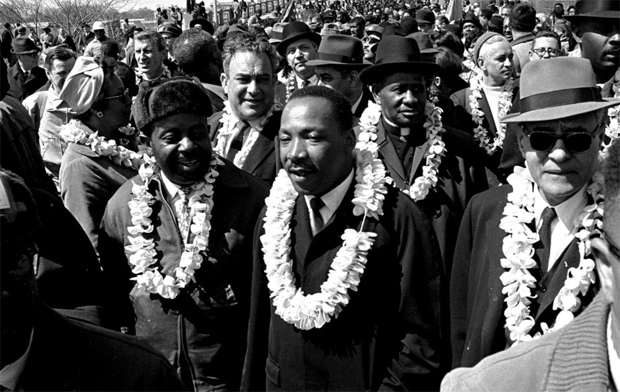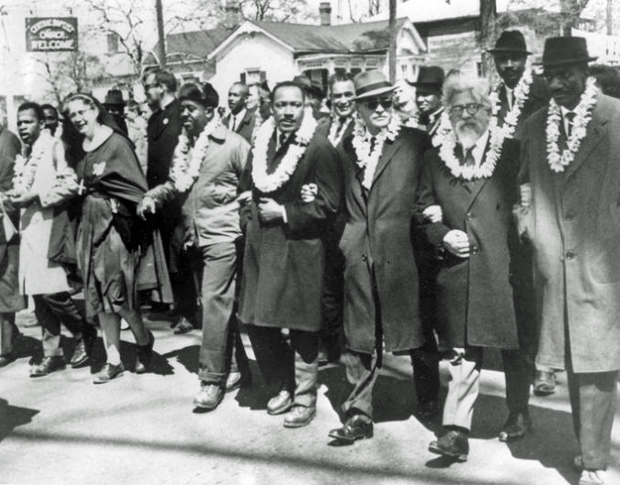
Photo: Associated Press

Hundreds wore the leis - with the underlying message “Hawaii knows integration works”.
26 September 22
From the I Didn’t Know That file: In Alabama on March 21, 1965, Martin Luther King Jr., John Lewis and other civil rights demonstrators made their historic march from Selma to Montgomery – and photos taken of the march show King and others wearing Hawaiian leis.
But why leis at a civil rights march in the Deep South? A year prior, King had given a lecture in Hawaii, where he met Rev. Abraham Akaka—a Hawaiian/Chinese pastor at the Kawaiahaʻo Church in Honolulu, where he gave his sermons in both Hawaiian and English.
It was Rev. Akaka that sent King and his followers the flower leis in an expression of pure aloha. For the demonstrators, the flowers provided a stark contrast to the weight of the moment and served as a symbolic connection of the civil rights struggle around the U.S.
The day would come to be known as “Bloody Sunday” as demonstrators were brutalized trying to cross the Edmund Pettus Bridge.
SOURCE: SURFING HERITAGE & CULTURAL CENTER
ANOTHER VIEW – FROM HAWAII VIEW:
Why Martin Luther King Jr. wore a Hawaiian lei on Selma march
More than 50 years ago, the Hawaiian lei made a surprise appearance during Martin Luther King Jr.’s iconic Selma to Montgomery marches at the height of the Civil Rights Movement. To give and wear a lei is a Hawaiian emblem and gesture of love. And, during the third and final march that started on March 21, 1965, Martin Luther King Jr. and other civil rights protesters were seen leading the crowd of thousands adorned in flower lei.
The garlands were initially organized to be sent to King as a symbolic action of support and solidarity by Reverend Abraham Akaka, the older brother of U.S. Senator Daniel Akaka and then-reverend of Kawaiahao Church, a realization first reported by the seminal black digest Jet Magazine in 1991.
The two reverends had developed a friendship over the years bound by their belief in nonviolence and social justice.
King visited Hawaii a number of times during his life. Just a year before the Selma marches, he spoke at a Honolulu conference for the Hawaii State Human Rights Commission—the first committee of its kind in the United States—of which Rev. Akaka was a board member.
King found the Islands’ multiethnic population and everyday society to be an inspirational source of “racial harmony” as the struggle of African Americans made headlines across the continental U.S.
The lei themselves, however, were hand delivered by a five-person contingent who flew to Selma to participate in the iconic marches. One of the individuals, Nona Ferdon, remembers what she can of the morning, telling the Human Flower Project, a blog dedicated to international floral news and topics, “It was all on short notice and we showed up at the airport around 5 in the afternoon. There was no publicity or anything like that, we just said goodbye to some friends and left [for Selma, Alabama]. Taking leis was just something that anyone from Hawaii would do almost automatically.”
Another photo from the day also highlights a banner they brought with them to the marches that reads "Hawaii Knows Integration Works."
One of Dr. King's most famous and beautiful speeches regarding Hawaii was given during a September 1959 visit before a special session at the Hawaii Legislature:
“I come to you with a great deal of appreciation and great feeling of appreciation, I should say, for what has been accomplished in this beautiful setting and in this beautiful state of our Union.
"As I think of the struggle that we are engaged in in the South land, we look to you for inspiration and as a noble example, where you have already accomplished in the area of racial harmony and racial justice, what we are struggling to accomplish in other sections of the country, and you can never know what it means to those of us caught for the moment in the tragic and often dark midnight of man’s inhumanity to man, to come to a place where we see the glowing daybreak of freedom and dignity and racial justice.”
- AUTHOR: MATTHEW DEKNEEF
Please choose your region
Australia | US / Rest of the World(Changing your region, will clear your cart)